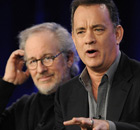Editorials
Academic prudence
(China Daily)
Updated: 2010-01-15 07:52
 |
Large Medium Small |
Top archeologists are confident that what was excavated in Anyang, Henan province, is the tomb of Cao Cao (155-220), warlord and penultimate chancellor of the Eastern Han Dynasty (AD 25-220).
The discovery immediately made it to the list of the "Top Six" new archeological findings of 2009, compiled by the Chinese Academy of Social Sciences.
The country's top archeologists, sent from the academy to verify the findings of another team of archaeologists in the province, said that they have more evidence to back up the assertion that the findings are of Cao Cao's tomb. But they have been modest so far, calling their judgment "prima facie".
| ||||
But we appreciate the way the scholars handled the highly controversial topic. We believe such an approach is conducive not only to the intellectual world's constructive interaction with society, but also to enlightening our laymen in public.
Were it not for the classic Romance of the Three Kingdoms, the average man would not have cared about Cao Cao. Had the book not been associated with the household name Cao Cao, few might care what the archeologists unearthed.
Cao Cao helped build the strongest and most prosperous state during the Three Kingdoms period (AD 220-280) and was remembered for his outstanding military and political talents.
But Cao Cao, the cursed and well-praised legendary general, left behind many myths, some about his burial site. It is therefore only natural that many may have formed their own opinions of the site.
The most vociferous skeptics were outside the circle of experts. We heard cultural relic collectors and classic literature researchers discrediting the archeologists' assertions.
And questions were not limited to the authenticity of evidence. On the Internet, suspicions of economic motivations abound - Cao Cao has been too famous to not draw curious visitors to his burial ground.
We saw the scholars' discomfort with irresponsible lay comments. But given the universal drop in public confidence of public institutions, including everything previously considered as true, the questions were inevitable.
We liked their scholarly manner. They have chosen to communicate instead of imposing their judgment upon their audience.
That the archeologists have taken pains to explain the highly technical work to the public is admirable. They not only provided evidence, but also explained how the field work was conducted.
And, instead of blaming ignorance on their critics, they put the criticism on their shoulders, claiming that they failed to provide information to the interested public.
Besides, they left ample room for counter arguments and evidence: They said their conclusion is not final. That is the way intellectual work should be.
Rather than whether or not we have truly found the remains of Cao Cao, we are more interested in seeing followers of such a wonderful example.
(China Daily 01/15/2010 page8)












